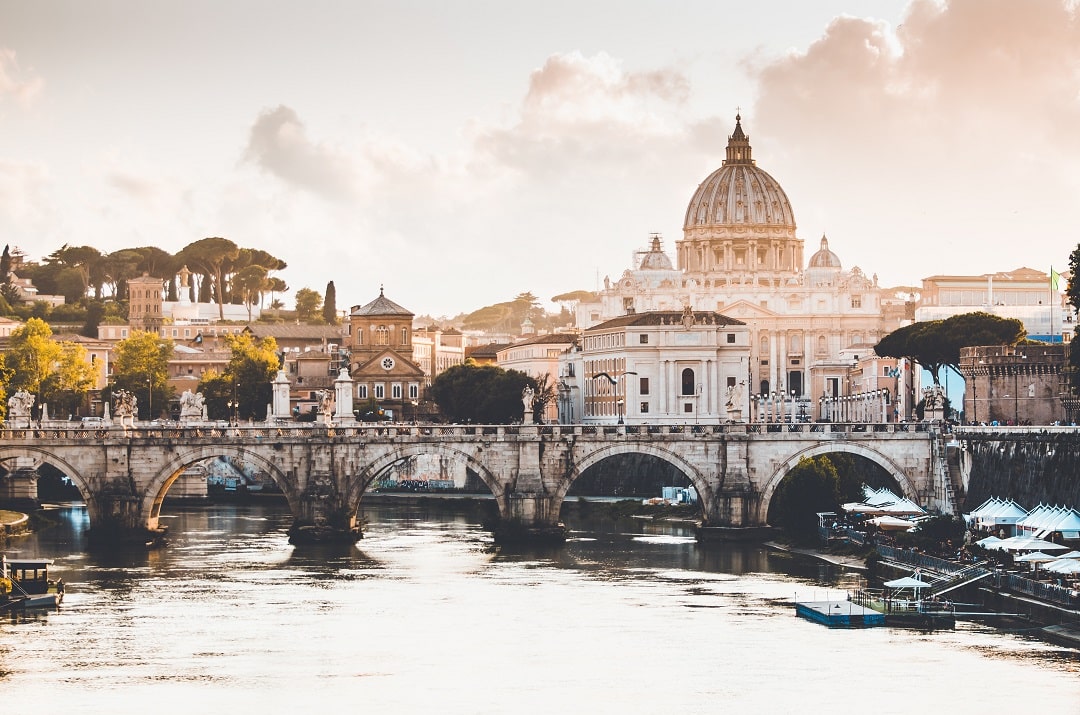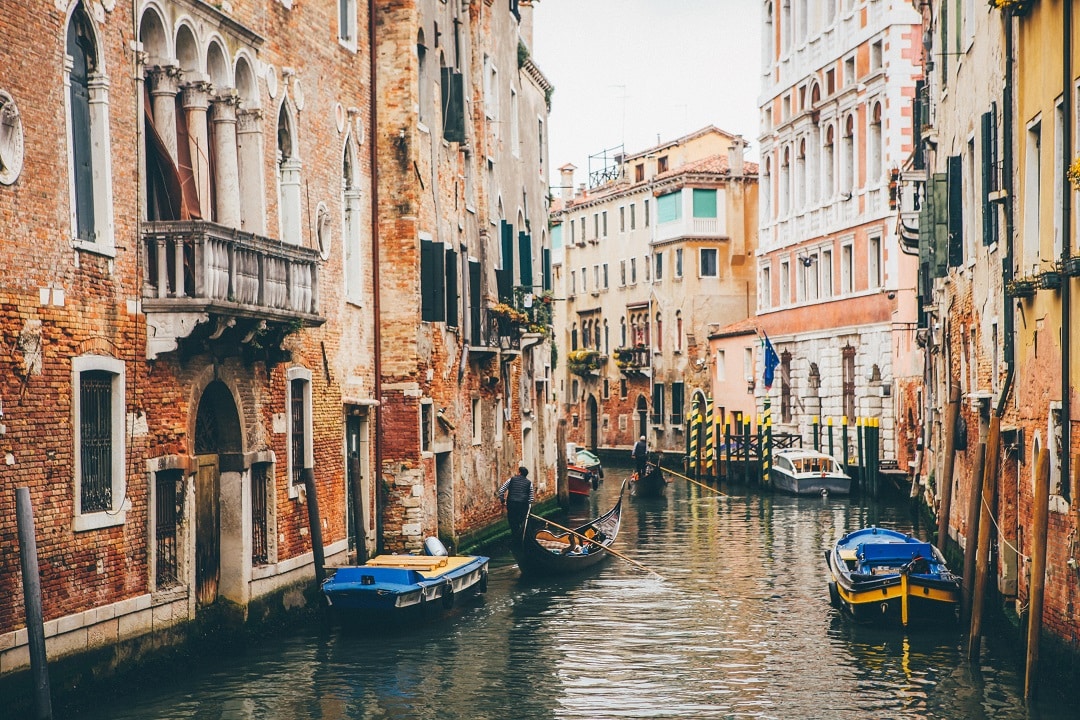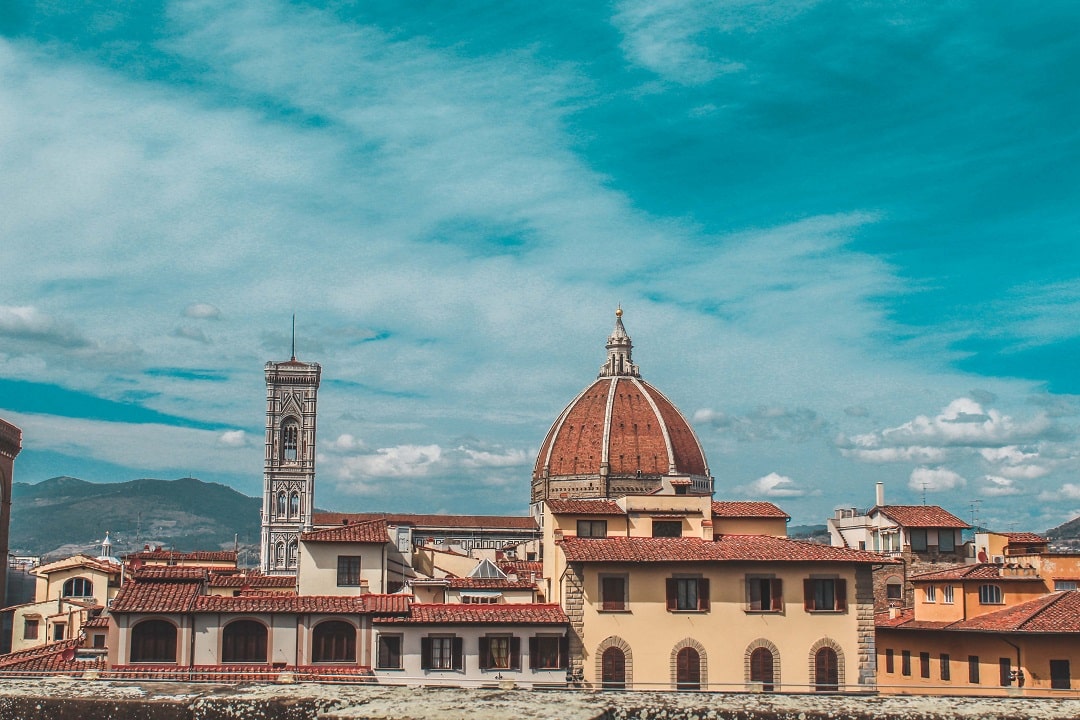How Much Does It Cost to Fly to Rome Italy
**This post may contain affiliate links. I may be compensated if you use them.
Have you ever wondered how much does it cost to go to Italy? With stunning landscapes, vineyards, historic monuments, picturesque cities, and delicious food; who wouldn't want to go? However, as much as Italy may be a dream vacation for, well, pretty much everyone, it's also a destination where your budget tends to get in the way. Italy is popular, very popular, and prices often reflect that. However, with a few tips and tricks, it is possible to explore Italy without breaking the bank.
For the purpose of this article, I'm going to suggest a ten-day itinerary in Italy to hit the highlights. This includes three days in Rome, four days in Florence (for which I suggest including a day trip to somewhere in Tuscany and a day trip to Cinque Terre), and three days in Venice. Please keep in mind that this budget for Italy is designed for one person. If you are travelling as a couple, you will need to double all costs except for hotels.
| Estimated cost | |
|---|---|
| Airfare | $600 |
| Accommodations | $1,200 ($120 per day) |
| Local transportation | $200 |
| Attractions | $150 |
| Food and drink | $350 |
| Random spending | $100 |
| TOTAL | $2,600 USD |
The above estimate is in American dollars, so please use xe.com to find out the average costs in your home currency.
Also, keep in mind that this is just an estimate. Italy isn't necessarily a cheap travel destination, however, savvy travellers will be able to reduce their costs by using some of the tips and suggestions shared in this article.
If you're Canadian, you may want to consider applying for one of the best travel credit cards in Canada to help offset your costs by collecting points. For example, the American Express Platinum Card gives you a signup bonus of up to 105,000 American Express Membership Rewards points which have a minimum value of $1,050 (potentially more if you transfer your points to Aeroplan or Marriott Bonvoy ). There's also the Scotiabank Passport Visa Infinite card that has no foreign transaction fees and it comes with airport lounge access .
Airfare
Rome is a popular enough hub in Europe that, if you look early enough, you can probably find a decent deal. Your best bet is to find airfare deals is to avoid travelling during the high season (May – end of September). Average fares during the shoulder season (April or October) are approximately $600 return.
Insider tip: If you have a couple of extra days to spare, you may also want to consider flying to one of the bigger airports in Europe such as Amsterdam, Paris, or London that often offer cheaper deals. From there, you can then catch a smaller flight with Ryanair or Easy Jet. These small flights can usually be purchased for under $100 each way including paying for checked luggage if you book early enough in advance.

Accommodations
Accommodations really range in price in Italy depending on where you are located, type of accommodation, as well as the time of year that you visit. That being said, there are a number of options available for all budgets. For the sake of an estimate for this article, I have chosen mid-range hotel pricing during the shoulder season (approximately $120/night). To be honest, there are cheaper options when it comes to accommodations, but I wanted to give you an average price for budgeting purposes.
Personally, I recommend not getting too caught up on location in Rome, as long as you are near a metro station or bus stop, you will easily be able to get around. Versus in Venice, it is absolutely worth paying a bit more to stay in Venice proper rather than on the outskirts.
Looking for recommendations? I suggest the following:
Hostels
- Rome: Generator Rome or The Yellow
- Florence: Plus Florence or Hostel Archi Rossi
- Venice: The Academy or Silk Road
Mid-range hotels
- Rome: Hotel Serena or Hotel Paulo II
- Florence: Hotel Balcony or Hotel Delle Nazioni
- Venice: Hotel Gorizia a La Valigia or Hotel Al Vagon
Luxury Hotels
- Rome: Rome Luxus Hotel or Harry's Bar Trevi Hotel and Restaurant
- Florence: Hotel Lungarno or Hotel Bernini Palace
- Venice: Hotel Londra Palace or Hotel Danieli
If you have the right credit card, you can save a fair amount of money on hotels. Americans should strongly consider the Marriott Bonvoy Brilliant American Express Card since you can earn up to 75,000 Marriott Bonvoy points and $200 back at U.S. restaurants as a welcome bonus.
Canadians should consider the Marriott Bonvoy American Express which gives you up to 70,000 Marriott Bonvoy points. That's enough points for up to five free nights at some hotels which could easily have a value of over $500. There's also the BMO World Elite™* Mastercard®* since it typically has a sign up bonus worth more than $200 and the annual fee is normally waived for the first year.
Local transportation
Getting around Italy is very easy thanks to the train system and public transit in the major cities. Since this itinerary is for the main highlights, I recommend using the train service rather than renting a car. Driving in Italy's tiny streets can be pretty daunting.
For trains between cities, the easiest and often cheapest is to purchase your ticket the day of or even the day before. Don't bother with a rail pass of some sort, it's a waste of money. Italy has two types of trains: the fast trains which are more expensive, or the slower local trains which are a fraction of the price and actually quite scenic since they stop in the smaller towns. Since you don't have any huge legs in this journey, I would suggest the slow train if you enjoy train travel. Save money and get an enjoyable, more local journey. Tickets for the slower trains depend on the tip, but you can average about $20 per ticket. If you want the fast trains, expect to pay up to $50.
In terms of getting around cities, walking is by far the best way to explore Italy. However, while Florence is pretty easy to do by foot, Rome is quite a large city and you will absolutely need to use public transit if you're not staying central. Using the subway and buses are an easy way to get around Rome and tickets are quite affordable. You can get a 3-day pass for under 20 euro (about 22 USD). In Venice, there are no cars only the vaporetto which is a public boat that stops along the canal. It is quite expensive with a 2-day card costing about $35 USD. You can walk from one end Venice to the other in about 20 minutes so don't bother with the vaporetto unless you're going to one of the surrounding islands
Since you are likely flying in and out of Rome, you will also need to get back to Rome the night before you leave. In this case, I would take the fast train which will cost more but it is the longest journey and you don't want to spend your final day on a train. The fast train is about 3.5 hours and tickets can be purchased for about $80.

Attractions
Attractions in Italy are one of those areas where it's really easy to go over budget depending on what you are looking for. If you are a big museum and art enthusiast, then you will want to make sure you allocate extra for this part of your budget. Italy has plenty of museums and galleries that can keep you busy for days if you like.
I think that most of Italy's charm lies in exploring the cities by foot and seeing the architecture and the landscapes. If this is more of your type of travel, then you can count on having a smaller budget. That being said, there are a few 'musts' including visiting Vatican City with a tour, the Colosseum, and the statue of David.
You definitely want to buy your tickets in advance so you can skip the line whenever you can as the lineups for the attractions can be quite long even during the low season. Here are some of the tickets you'll want to pick up before you depart.
- Pompeii day trip from Rome
- Uffizi Gallery
- Academia Gallery
- Best of Cinque Terre
- Venice gondola ride
- Guided Murano, Burano, and Torcello day trip
- Doge's Palace and Saint Mark's Basilica guided tour
For the basic attractions, I'd say allocate $150.00. If you are keen on museums you will probably want to double that.
Keep in mind: I've also included two day trips on this itinerary. Both Cinque Terre and Tuscany (Pisa, Siena, etc.) can be visited as a day trip on your own using the trains from Florence. However, if you would rather do a guided tour then you need to allocate extra in your budget for that as well.
Food and drink
Let's be honest, you can't come to Italy and not eat. Food and drink is one of the main highlights about a trip to Italy, so do yourself a favour and know in advance that your food and drink budget in Italy may be a bit higher than in other destinations. That being said, it's easy to keep it reasonable with a few tricks.
Almost all Italian hotels offer breakfast of some sort included in your stay which is a huge help. There are also plenty of vendors that will sell you delicious paninis or slices of pizza for only a few euros to take away. Dinner is the best time to enjoy a big sit down meal, but to get the best deals (and meals!) stay away from the main tourist attractions. Ask your hotel for recommendations for somewhere smaller and local. You'll be surprised as to how many places you can get a delicious meal with a glass of wine for 20 dollars.
With this type of arrangement in mind, your daily meal costs will look something like this:
- Breakfast – $5 (if not included in hotel, for coffee + pastry)
- Lunch – $7
- Dinner $20
Which equals $32 per day, though I'd round it up to $35 because I bet you'll stop for gelato.
First-time visitors to Italy should know that there is a charge for sitting and eating in a restaurant, so don't be surprised if you see an extra charge for a couple of euro on your bill- this is normal. Italians also tend to eat much later than we do in North America so have a late lunch or grab gelato as a snack so you can hold off until local dinnertime.

Random spending
Italy is a mecca for shopping and it's easy to find something to want to bring home. Even if you aren't typically a big shopper on your travels, I recommend you budget a little extra just in case. There are fresh olive oils and bottles of limoncello which not only make great souvenirs but also great gifts. Not to mention the quality leather, Venetian masks, Murano glass…the list goes on. Needless to say, you will probably be tempted by at least something here so, to be safe, I'd budget at least an extra $100 for shopping and random spending (more if you are coming specifically to shop). Even if you don't use it shopping, you'll probably use it on gelato or Aperol Spritz on the patios.
Italy trip cost
So how much does it cost to go to Italy? For ten days in Italy including three major cities and two day trips, you can expect to pay about $2,600 USD which is actually more than a month long trip to Southeast Asia. While this may seem like a lot, consider how much you are seeing and doing during your visit.
For more European inspiration, check out my guides to Scotland, Ireland, Cyprus, Croatia, Austria, Malta and Greece.
Is Italy expensive to visit?
Italy is definitely not considered to be a cheap destination to travel and I wouldn't recommend it as a budget destination. That said, Italy doesn't have to be expensive, you can choose to explore Italy on a budget. If you are worried about an Italy trip cost, take a look at the suggestions in my article on how to explore Italy on a budget.
How much does it cost to fly to Italy?
There are a number of factors that come into play when figuring out how much it costs to fly to Italy. However, based on my calculations above, the average price from North America is about $600 USD.
Is Rail Pass in Italy worth it?
I would say no, especially if you are just staying in one country. Italy has so many train options including fast trains and slow trains and the train passes can be very limiting. Doing it on your own will allow for more flexibility and, especially if you choose the slower local trains, will end up saving you a lot of money as well.
Do you need a rental car in Italy?
There is no need to rent a car when in Italy unless your plans are taking you far away from the main areas. A car will give you more freedom so if that's what you are going for, then by all means go for it. However, you might find it intimidating (especially when it comes to parking) in the main cities.
What should you not miss in Italy?
This really depends on your interests. Some will tell you not to miss a gondola ride in Venice whereas I don't really care about that and would say don't miss the Colosseum in Rome. I would say don't miss Venice or Rome in general. Both are incredible cities that are very unique and have so much to see and do. A couple of other "don't miss" I would add to my list: trying authentic Italian gelato (stay away from bright colours!). If you are a food lover and can work it into your itinerary, I also highly recommend an Italian cooking class. Taking home the recipes is always good but the experience itself is a ton of fun and it's a great way to have more of a local experience.
Where should I go for my first trip to Italy?
I suggest using Rome, Florence, and Venice as your bases for your first trip to Italy. These three cities are considered kind of the 'classic' stops and also have a number of day trip options that will allow you to see smaller areas or other towns without having to worry about moving around so much.

How Much Does It Cost to Fly to Rome Italy
Source: https://www.moneywehave.com/how-much-does-it-cost-to-go-to-italy/